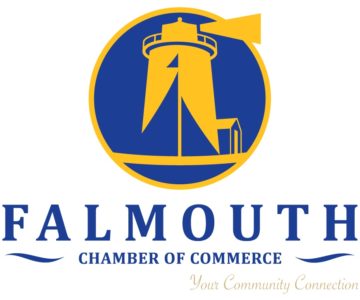By Douglas Karlson
The land is there. The infrastructure is there. The need is there. So it would seem that construction of high-density village housing around Mashpee Commons is what some might call a “no-brainer.”
But the opposite is true. Creating well-designed housing that meets the demands of the people who will live there, as well as those who live nearby, requires a great deal of thought and discussion – and it’s not without many challenges.
One of those challenges is the fact that neighbors, fearing an eyesore that will decrease the value of their single-family homes, typically balk when the concept of high-density housing is proposed. Another challenge is money. Such projects are expensive to build, and money is getting costlier to borrow.
Nevertheless, says Arnold “Buff” Chace, Mashpee Commons’ managing general partner, the original idea behind Mashpee Commons when it opened in 1978 was to build a walkable mixed-use village with retail shops, restaurants, businesses, and homes. at goal is in keeping with the philosophy behind Chace’s real estate development firm, Cornish Associates, which is to create “walkable, mixed-use neighborhoods with integrity in plan and architectural form.”
“That goal still holds,” says Russell Preston, a former employee of Mashpee Commons and now a real estate developer and consultant working to make the original vision a reality.
Mashpee Commons owns approximately 175 to 200 acres of contiguous land surrounding the shopping district. Roads and utilities are in place. Given the trend toward shopping at Amazon rather than at brick and mortar stores, the idea is to use this land not for more retail space, but for homes.
Once developed, a mixed-use village would be walkable (it would take about 15 minutes to stroll from one side to the other) and there could also be parks, trails into adjacent open space, and bike paths that connect to the rest of Mashpee. According to Preston, people could bike to Mashpee Commons, have lunch, and then bike home.
Toward that end, Mashpee Commons, with the help of Preston and his firm, Principle, an urban design and development company based in Boston, conducted visioning exercises with community stakeholders last fall. The goal was to discover what Mashpee residents were interested in. Since then, the developers have been hosting weekly “Tuesday Talks” to cover various aspects of residential development, and once again, to hear from the community. In May, a “charrette” is planned to resolve any conflicts and come up with solutions people agree on.
Ten or so years ago, Mashpee Commons floated the idea of doing a so-called “40B” development of nearly 400 units. Chapter 40B is housing legislation that eases density restrictions if developers include affordable housing, and was the only option available at the time. That idea is no longer on the table, in part because 40B projects are incredibly complicated and costly to administer.
Also, says Preston, a 40B development wouldn’t deliver the mixed-use village planners envision. “They’re not designed to deliver neighborhoods,” he says.
Most 40Bs are large projects with simple designs, but Mashpee Commons wants to create a neighborhood with a variety of homes – townhouses, lofts, apartments, cottages – at a variety of prices, along with other community amenities. “For us it’s more about the character than the number of units,” says Preston.
No matter what the ultimate design is, no one questions the need for more year-round affordable housing. According to Heather Harper, community design/affordable housing specialist at the Cape Cod Commission, the Cape (and the country in general) has failed to adequately plan for future housing needs, especially housing needed for a growing and essential workforce. Without such year-round housing, the economic vitality of the Cape is threatened.
The Cape Cod Commission projects that the population of Cape Cod will increase by 3.3 percent by 2025, to 221,000 year-round residents. At the same time, there will be a 5.5 percent increase in the size of the workforce.
The problem is compounded because housing on the Cape is increasingly seasonal. Since the great recession of 2008, says Harper, the housing market saw a net decline of 3,000 year-round homes.
“Seasonal demand is going to continue to outpace the year-round market,” Harper concludes.
Part of that problem is that out of the region’s housing stock, only about 13 percent is rental. The vast majority is owner-occupied single-family houses.
Cost is a problem too. Many working families spend more that 30 percent of their income on housing, often leaving little left over to cover other essential expenses. “More and more,” says Harper, “the housing supply is out of reach for year-round residents.”
Allan Isbitz, a member of the Mashpee Affordable Housing Committee, agrees. He notes that the population of Mashpee nearly doubled from 1990 to 2010. At the same time, there was a dramatic decrease in the number of young adults.
He maintains that the best solution is to increase the number of affordable rental units. Clustered in a village, such development can also allow residents to save money on cars, and make use of public transportation that services places like Mashpee Commons.
It’s a vicious cycle. With year-round residents forced to move off-Cape, it’s hard to grow a business when the workforce isn’t available.
With businesses unable to grow, there are fewer high-paying jobs and opportunities for young professionals.
In addition, says Harper, if we continue to build single-family homes for seasonal residents, we degrade the qualities that make Cape Cod a desirable place to live. She reports that forest loss exceeds 2,300 acres between 2001 and 2011. “We’ve got to find another way,” she says.
One better way, Harper concludes, is to build more compact urban developments.
Such developments are the focus of architects and developers like Don Powers of Union Studios in Providence, Rhode Island, who recently addressed an informative Tuesday Talk at Mashpee Commons.
To increase density and provide smaller, more affordable housing, he looks to design as a solution. Before World War II, he notes, there was a greater variety of housing available.
Neighborhoods typically offered a mix of single-family homes, small buildings with roughly four units, townhouses, duplexes, and apartments over shops. But after the war, the emphasis shifted to a monoculture of single-family homes. GI Bill loans applied only to single-family homes, and led to massive, land-gobbling developments like Levittown.
Smaller multifamily housing units went out of style. Powers refers to this as the “missing middle.” Now, communities typically have mid- and high-rise apartment blocks and single-family homes, but nothing in between. This, in turn, degrades what once were economically vital, walkable communities.
“We need to find a way to get over our addiction to the single-family lot,” says Powers.
He advocates interspersing a mix of housing types among single-family homes, while keeping the scale and lot sizes the same.
Developers can build a 16-unit housing development without it looking like a massive apartment building, he maintains. Instead, he recommends “pocket neighborhoods,” such as Sea Captain’s Row in downtown Hyannis, a project his firm designed, and “bungalow courts.”
But as soon as a developer mentions a large project, community members tend to come out of the woodwork to oppose it, for fear it will reduce the value of their property, says Powers. But studies have shown that that isn’t the case, he maintains.
Effective communication and good design are key in overcoming these complaints. “As soon as you say you want to put 16 units on an acre, people’s heads explode,” says Powers. But a good urban architect can make it look very reasonable. Once he presented drawings of the Sea Captain’s Row, his firm easily won approval by the planning board, and the community. “If you do it the right way, people like it.”
“The missing middle is the toolbox that we haven’t had that we need to bring back,” says Powers.
Developing a mixed-use village will likely require many partners. Preston explained that the idea is to develop an overall vision, set specifications, and codify the zoning so outside partners can join in the project. “We need to find a set of conditions to attract outside capital,” he says. “We need other companies, builders, and developers that have expertise in these types of projects. We need to make it attractive and feasible so others can come in and participate.”
But before that can happen, it’s essential to understand what the community wants and solicit ideas, which is why the emphasis now is to reach out to the community to craft a vision together. “It really needs to be a community-led project,” stresses Preston.
As for a timeframe, Preston says it’s hard to say. He’d like to see it done within the next 10 years, but said it’s a project that could take much longer than that. But he’s well aware of strong demand – both by younger members of the workforce, and seniors looking to downsize to a walkable community. Preston said it’s conceivable that the project might produce 40 to 60 units a year for the next 10 years.
Finalizing that vision, codifying the rules, and obtaining the capital and the partners needed to make it happen is sure to be a major challenge. “It’s a big problem,” says Chace, “but we’ve solved big problems before.”
Sidebar: Mixed-use villages on the South Shore
For ideas about creating a mixed-use village, developers at Mashpee Commons can look to other developments in Plymouth and elsewhere on the South Shore. According to Peter Forman, President and CEO of the South Shore Chamber of Commerce, there are a number of successful projects and more in the works.
“People are looking for more compact neighborhoods where there may be activities and amenities,” says Forman. That includes both young professionals who want more than a sleepy bedroom community when they commute home from work, as well as baby boomers who are downsizing.
Forman cites Cordage Park, which is repurposing old industrial land in Plymouth, and the Shipyard in Hingham as examples. Both have easy access to Boston. The old Naval Air Station at Union Point is being developed into a 17,00-acre community where 5,000 homes are planned.
Like Mashpee Commons, shopping centers are increasingly looking to add housing to create new town centers. Examples include Hanover Mall and South Shore Plaza in Braintree. Other smaller and highly walkable planned communities include The Pinehills and Redbrook in Plymouth.
Sidebar: Sustainable engineering
For large multi-use projects such as the expansion of Mashpee Commons, developers turn to local engineering firms like Coastal Engineering and Horsley Whitten for what’s known as “sustainable engineering.” The focus is on balancing economic, social, and environmental goals.
Horsley Witten has identified a number of “smart growth” or “low-impact development” planning techniques it uses to create compact developments that are pedestrian friendly, economically vibrant, accessible, visually appealing, historically relevant and within the carrying capacity of natural systems. These include the use of infill or redevelopment, locating close to existing infrastructure, avoiding or minimizing impact on water resources, plant and wildlife habitat, and use of renewable energy sources.
John Bologna, President and CEO of Coastal Engineering, explained that there are a number of engineering issues, mostly site-specific, that engineers consider when planning a high-density mixed-use village. These include:
- Site size, location, topography, geography, geology, and proximity to environment resource areas; and access to site utilities (sewage, electrical, gas, water)
- Town regulatory requirements/reviewing agencies: Zoning, Planning, Health, Conservation Commission, Historic Commission, Cape Cod Commission
- Building site access restraints such as street access, frontage, etc.
- Building/site layout and the presence of adequate lot size to support building and site infrastructure needs (parking, sewage disposal system, site drainage, green space, and lot coverage limitations)
While there are many challenges to building such developments, such as the availability of buildable and affordable land, regulatory restrictions and/or the cost of regulatory compliance, and neighborhood opposition, Bologna sees many benefits.
High-density mixed-use village developments “provide much needed housing for a variety of sectors of the population demographics, such as young adults, special needs, veterans, people in transition and elderly,” says Bologna. In addition, “they allow for greater economies of scale in construction and infrastructure costs, encourage the efficient routing of public transportation, and can be more energy efficient than other types of housing.”























